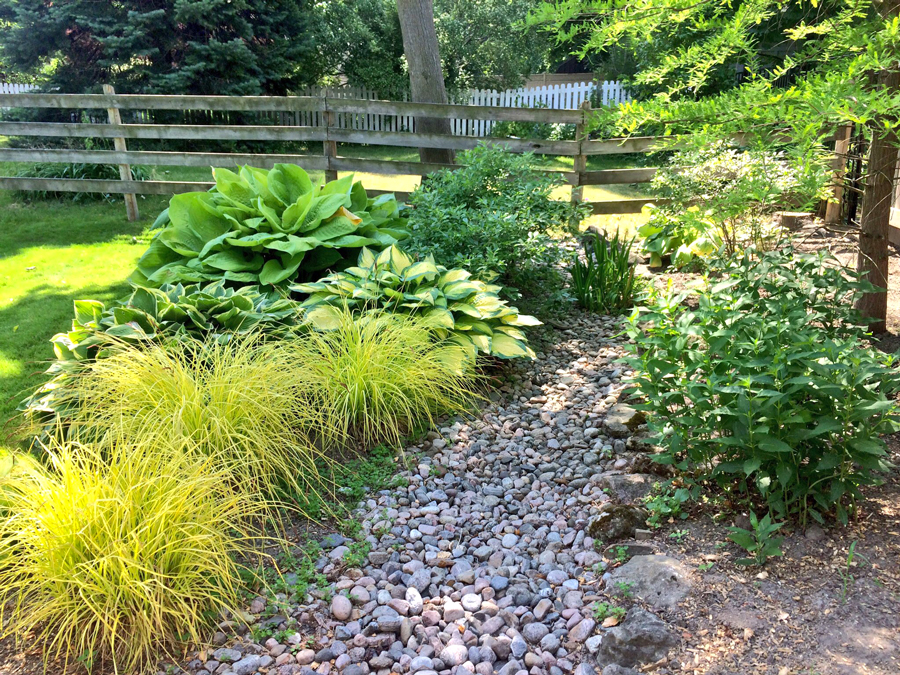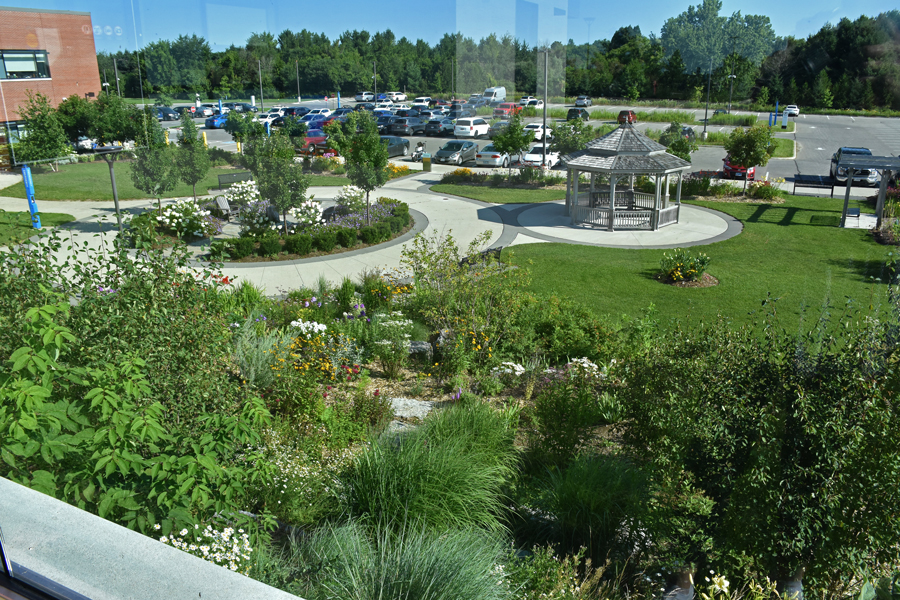ABOYNE – Gardeners know that collecting rainwater and using it to water their gardens is a smart way to conserve water.
And they know planting drought-tolerant plants is another smart way to conserve water, time, money and energy in the garden.
But what can you plant in an area that’s constantly soggy?
How do you deal with an area that holds the water after a rain and doesn’t allow it to seep into the ground?
And how do you divert rain runoff from municipal sewers to infiltrate your garden instead?
The Elora-Salem Horticultural Society has just that problem in the healing garden behind Groves Memorial Community Hospital, a garden its team of volunteers has planted and maintains.
Ann Ironside, president of the horticultural society, said when the hospital was built, the topsoil was removed, leaving hard clay soil at the surface.
“We’ve been dealing with that soil for two years, adding 10 to 12 inches of topsoil and mulch on the clay,” she said in a phone interview.
And most of the garden is thriving thanks to that intervention.
But there’s an area with just grass on the surface. And when rain runs off the roof of the hospital and down an elevation change, this grassy area “is just sopping wet,” she said.
And recent rains “have been a torrent,” she added.
The group can’t proceed with its other plans for the site until the soggy area is dealt with, Ironside said.
Enter Sean James of Sean James Consulting and Design, a landscaper with a passion for rain gardens.
Simply put, a rain garden is a feature that collects rainwater and snow runoff from your roof, directs it away from your house, and absorbs and filters the water while it makes its way to groundwater.
This diverts water from municipal storm drains and eventually waterways, allowing for greater capacity for big weather events.
Toronto recently experienced such flooding because its stormwater system couldn’t handle the huge and sudden downpour.
James said he loves rain gardens because they are smart, and they are beautiful.
“I call it the treatment train,” he said. “You lead the rain to a rain barrel or a dry creek and that leads to a rain garden.
“It’s not one solution; it’s a series of little solutions.”
In a residential lot, there are two important rules to follow. Rain gardens must be at least three metres from the house. This prevents water from running toward the house, which you don’t want.

Wet becomes dry – Rain gardens can look very natural, like a dry river bed or pond. Submitted photo
And water should seep into the ground within 24 to 48 hours. Otherwise you’ve created a mosquito-breeding bog.
If your soil is already well-draining, it’s fairly simple to dig a shallow trench from the downspout to three meters from the house, dig a depression in the yard, fill the trench with river rock and then plant your plants.
James said the sides of the depression should have a 30-degree slope and the bottom of the depression should be flat.
What you plant has to be both drought-tolerant and be able to stand in water for a while.
That’s a tall order, but there are plants that fit the bill.
James listed his top five picks: marsh milkweed, morningstar sedge, winterberry, blue flag iris and sneezewood, which does not cause allergies but is so named because it was used to make snuff back in the day.
It’s also important to use the right kind of mulch, he said – hardwood mulch, because it’s heavy and doesn’t float, or shredded cedar mulch, because it knits together and forms a mat-like material that stays put when there’s water.
When artfully done, your rain garden could look like a natural dry riverbed or a shallow pond.
The work at Groves hospital will require more than that, however.
Because the soil there is clay, James will likely have to excavate the area and use an auger to drill holes in the clay base before adding rocks, plants and mulch.
The hospital project is expected to cost about $26,000, which is steep for a volunteer group to raise.
Ironside said the horticultural society applied for a grant from the Ministry of Environment but was not successful this year.
The Rotary Club of Fergus-Elora recently gave $1,500 to the Elora-Salem Horticultural Society and the Grand River Agricultural Society and Centre Wellington Township often give grants as well.
“We will try again (for the grant),” Ironside said, adding donations generally help the club purchase soil, mulch and plants for the gardens it maintains, but they are not enough for a big project like this.
“We’ll keep our fingers crossed,” she added.
“To make the area the best it can be, we really need a rain garden.”



